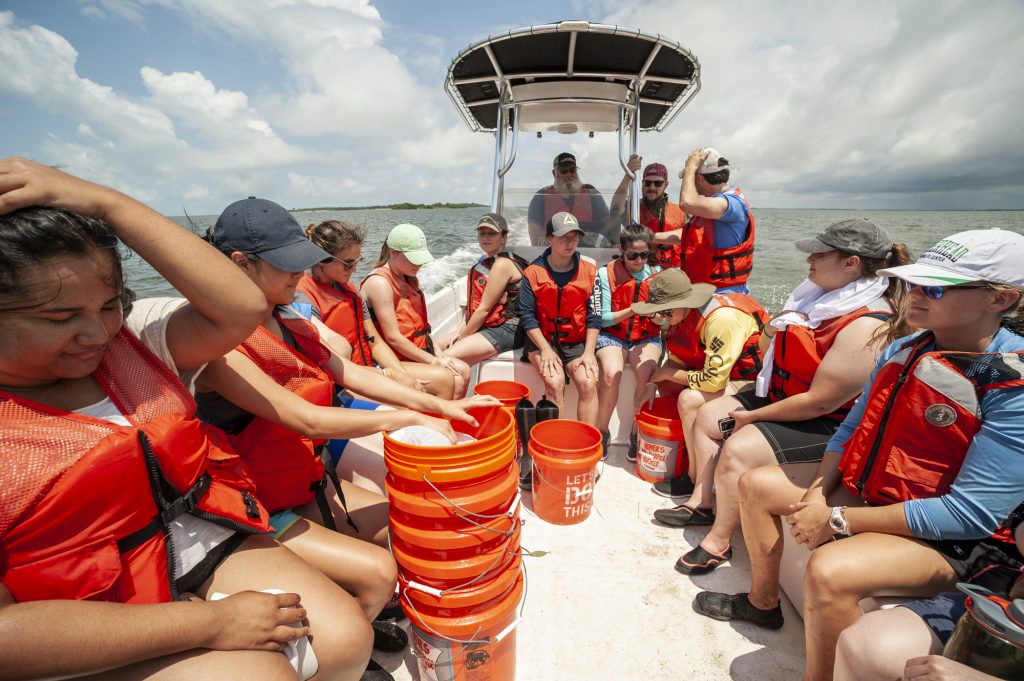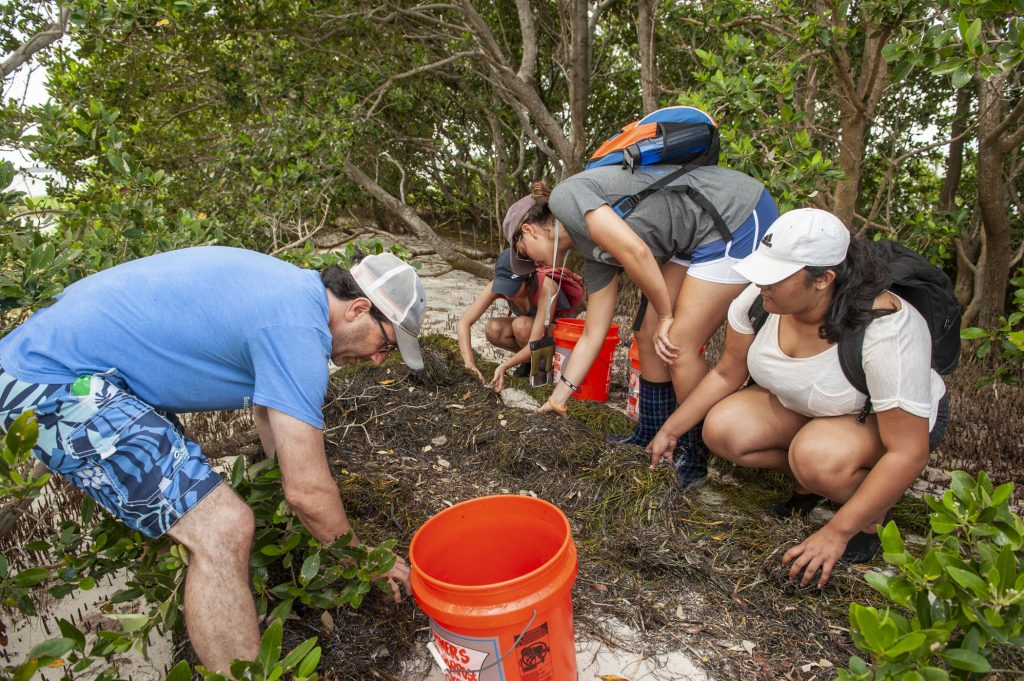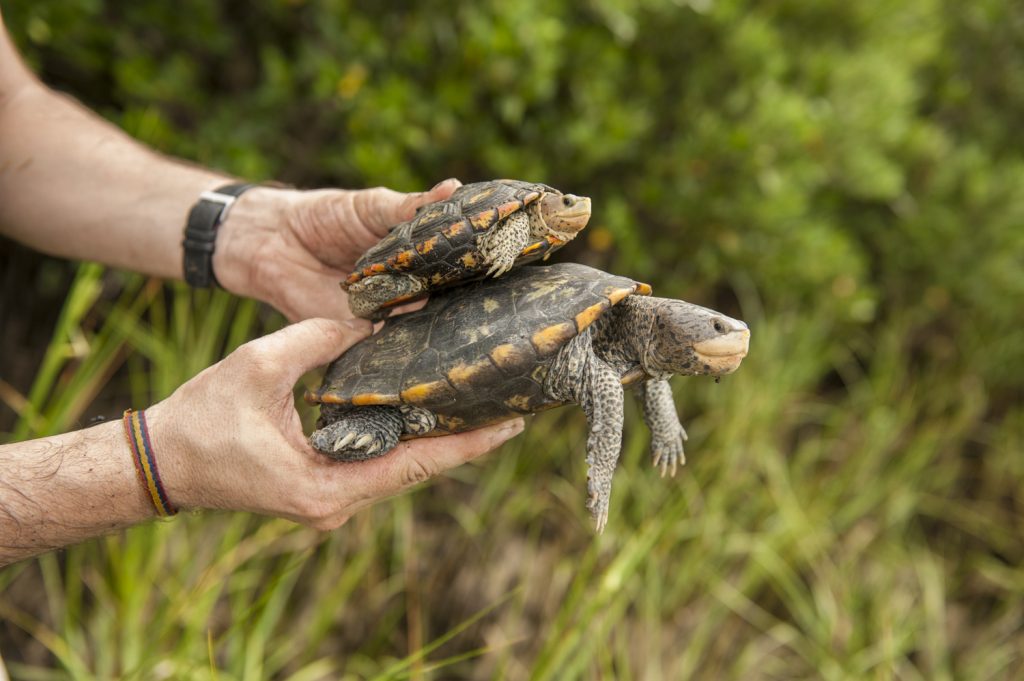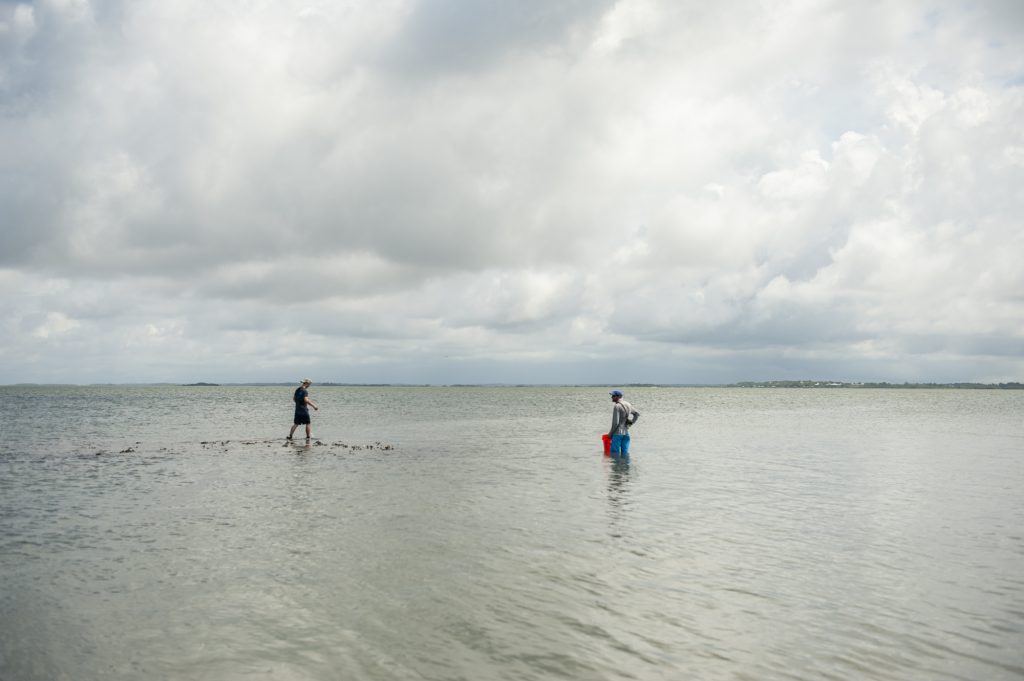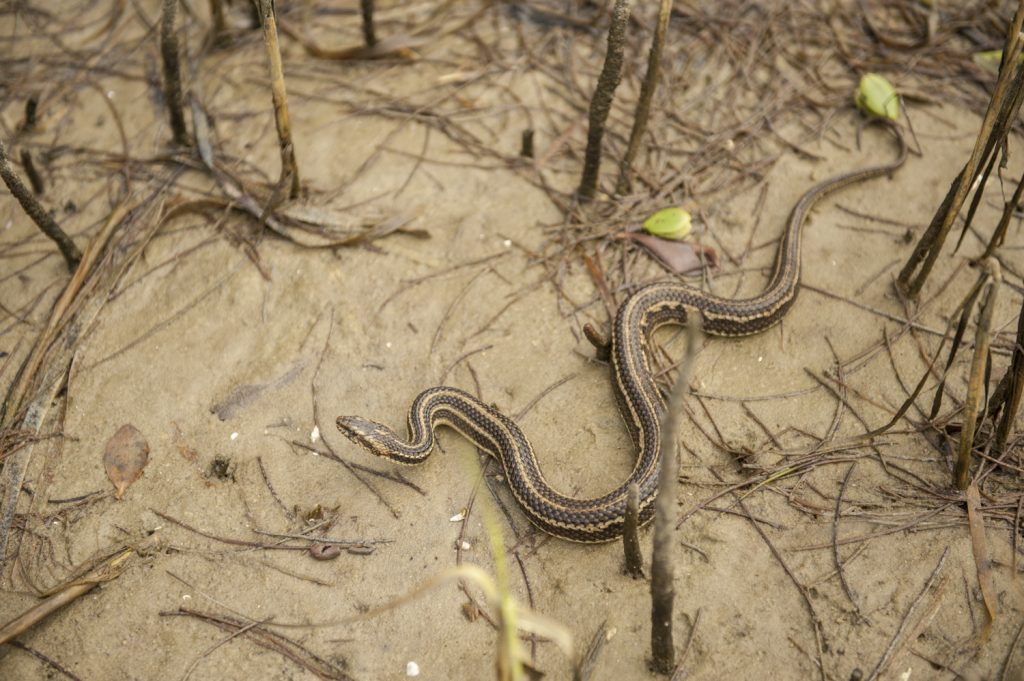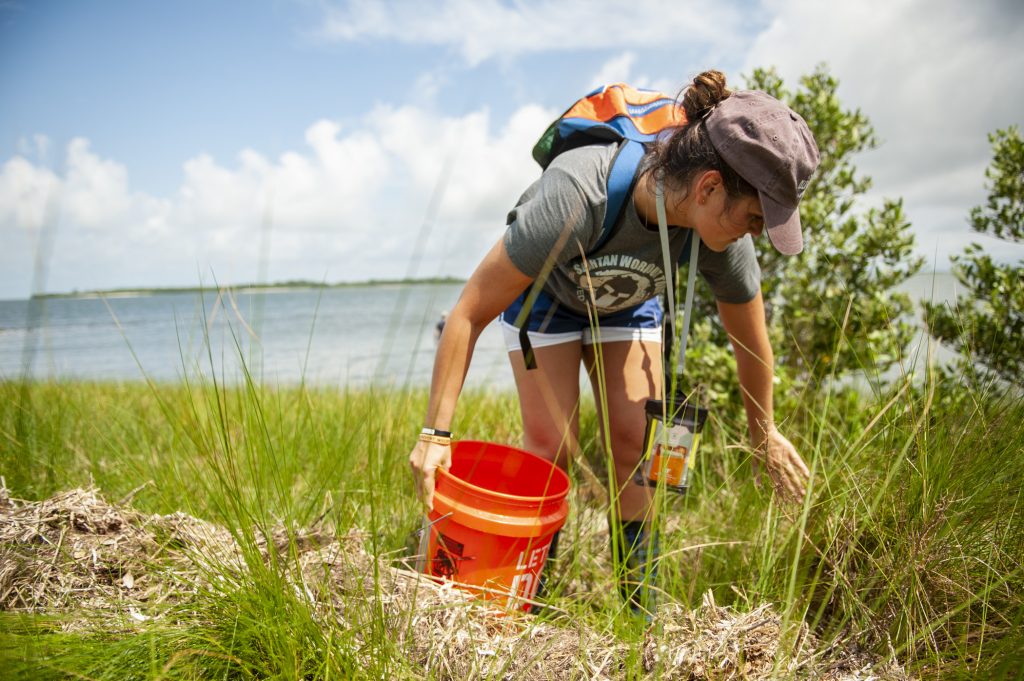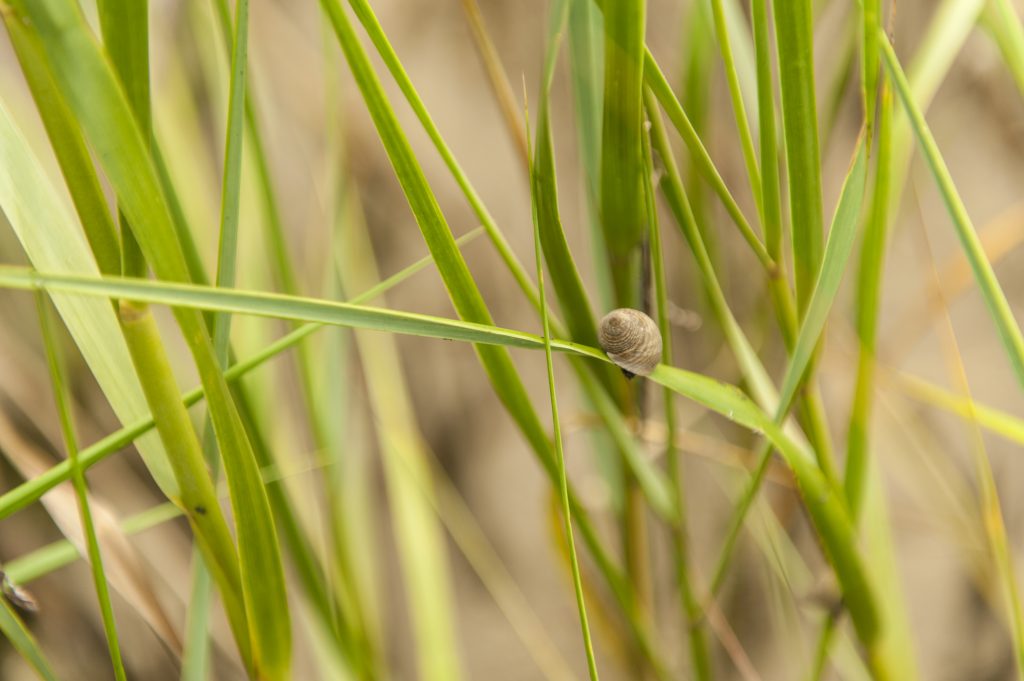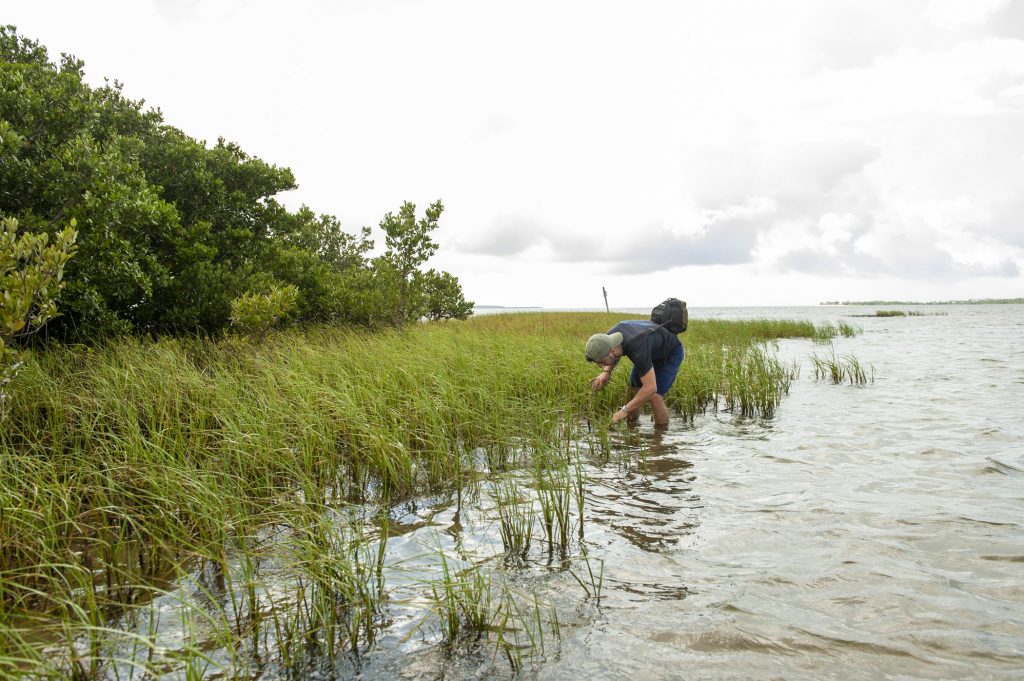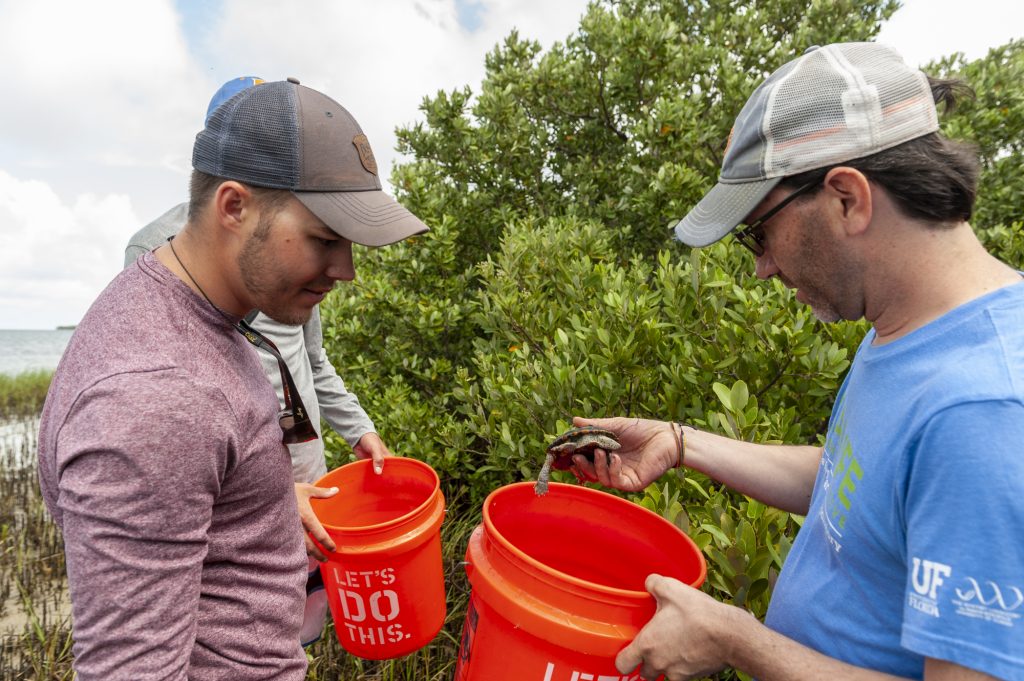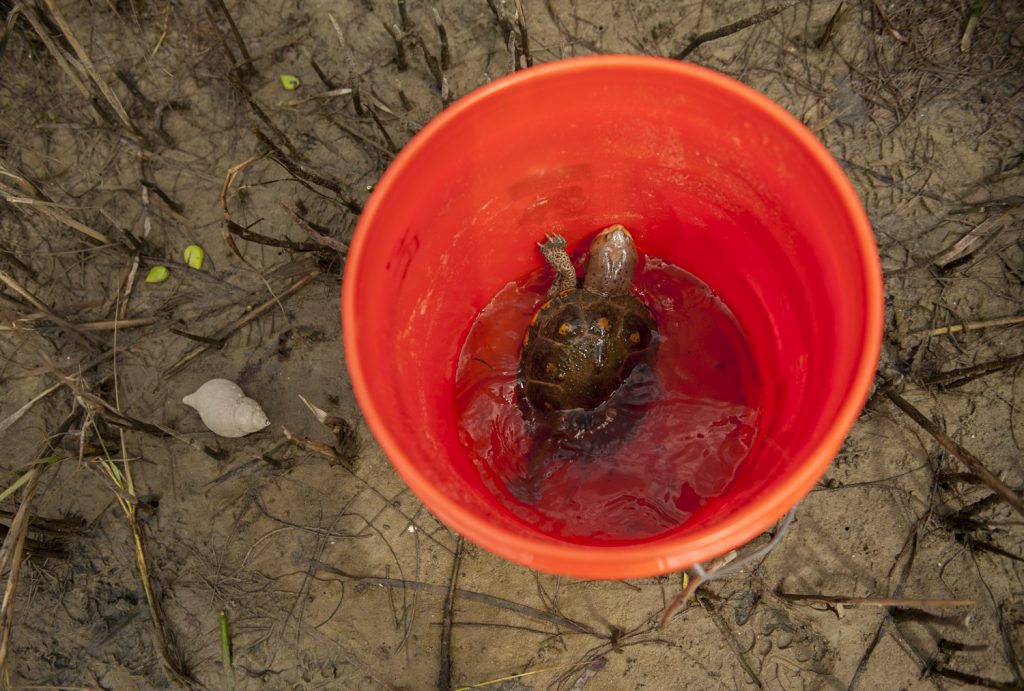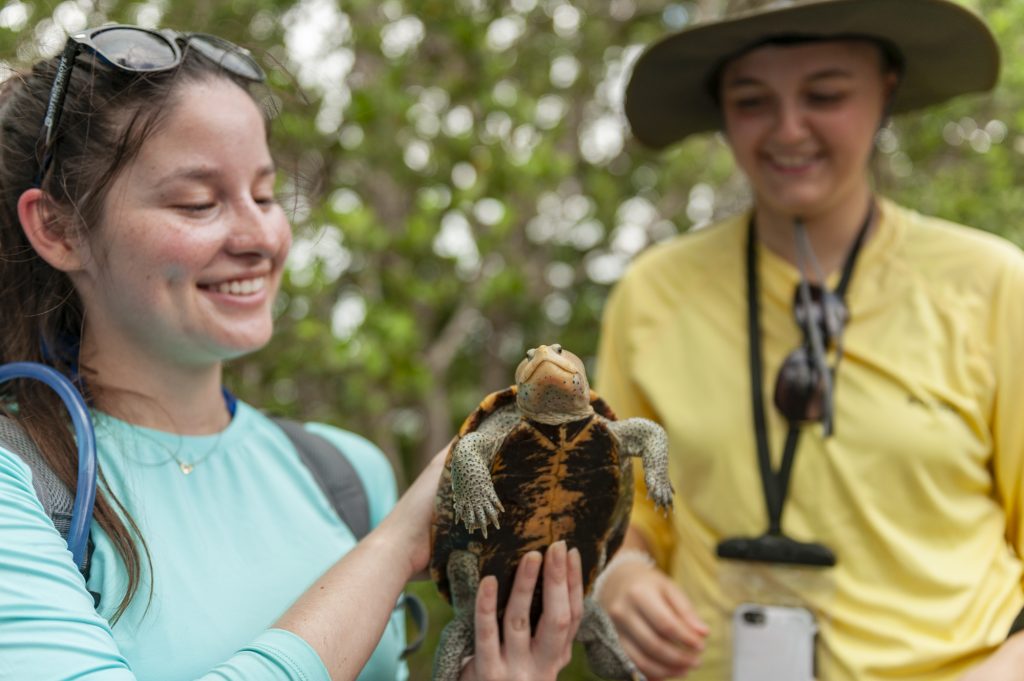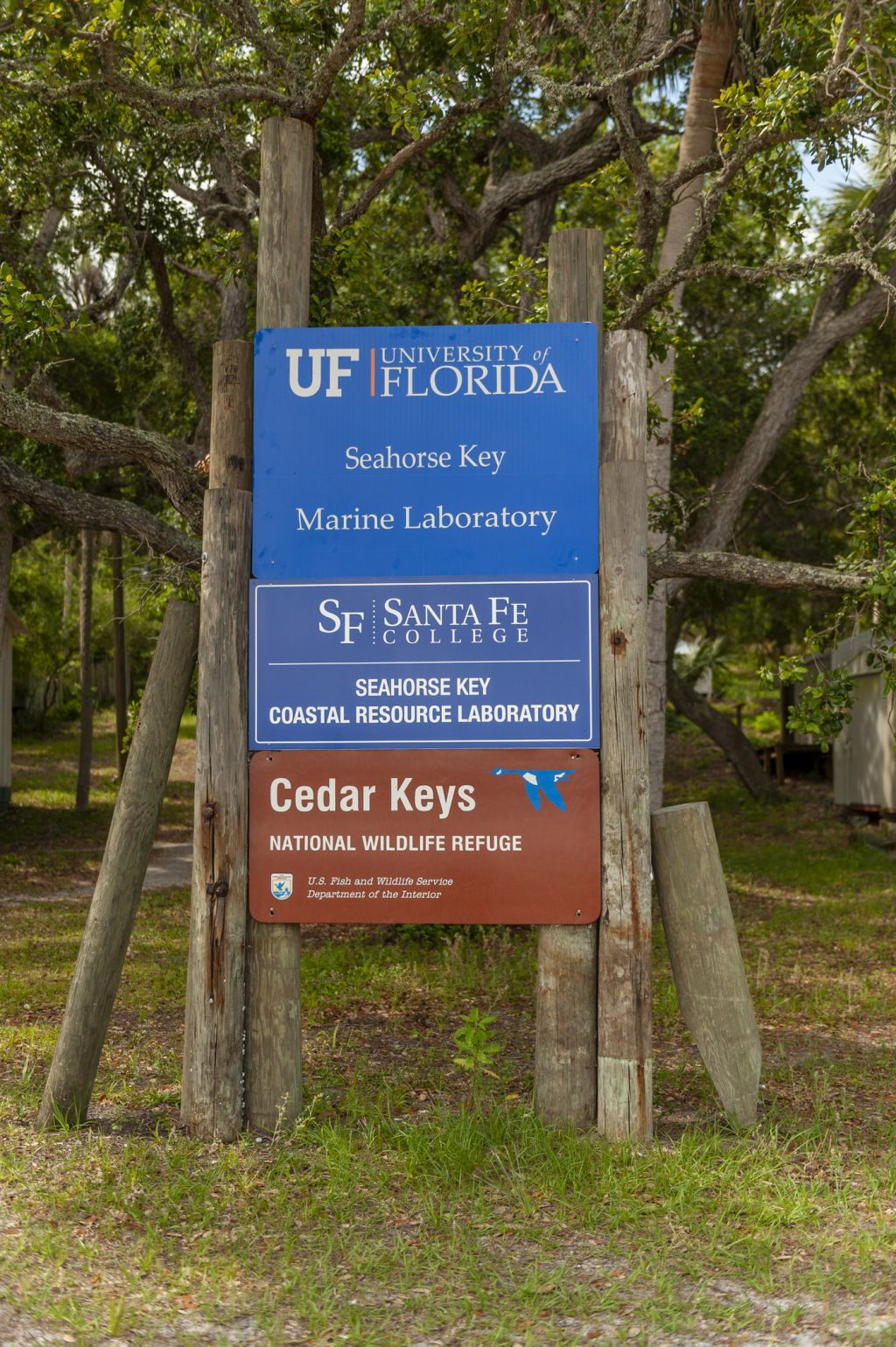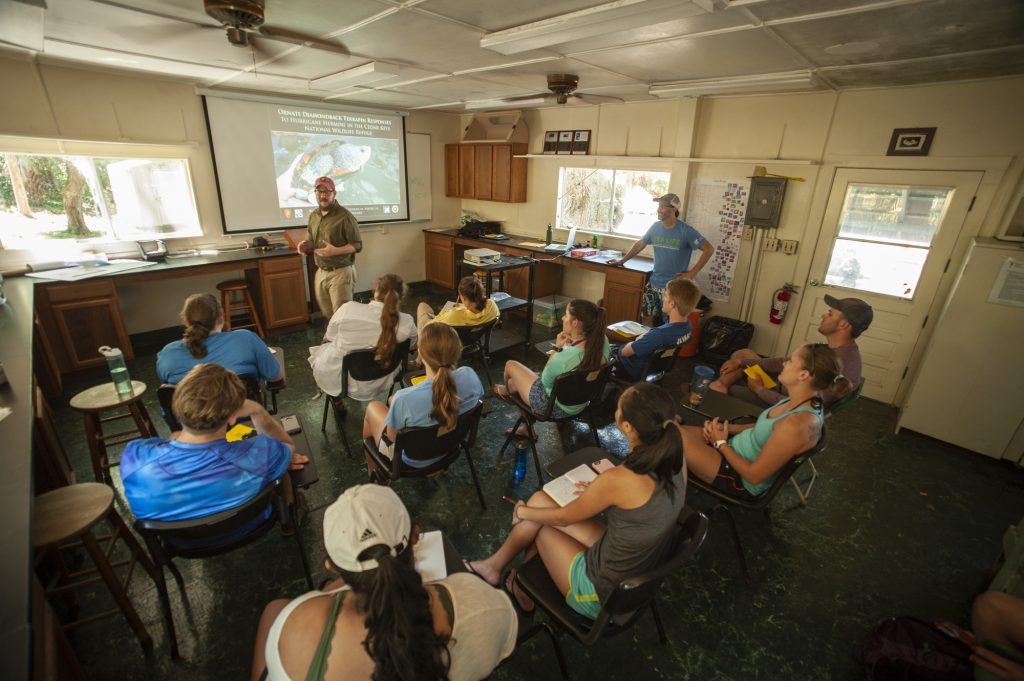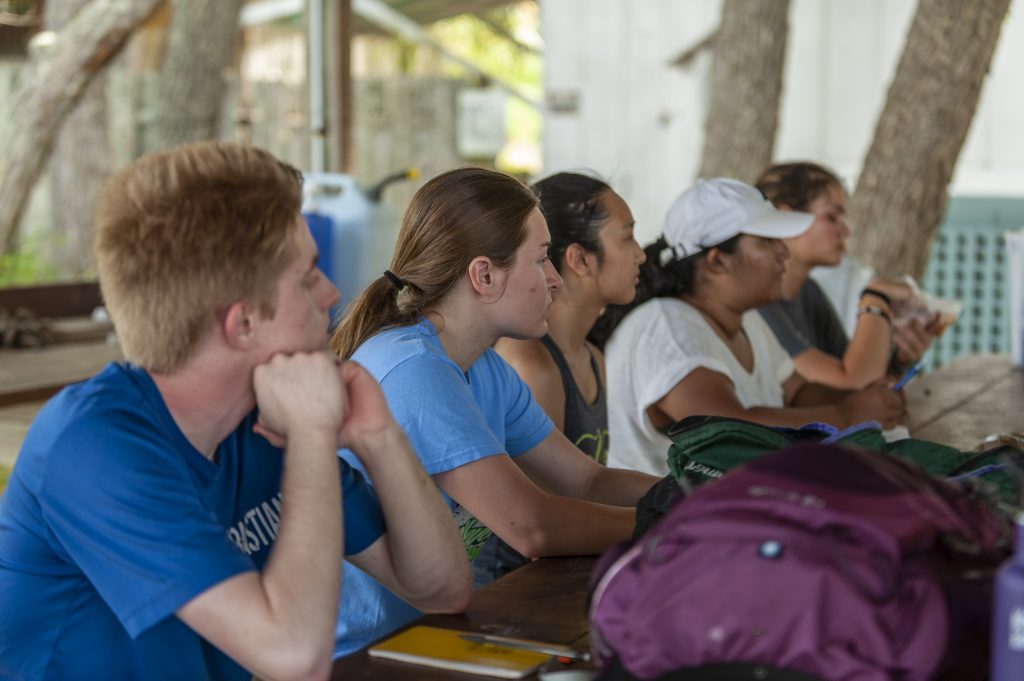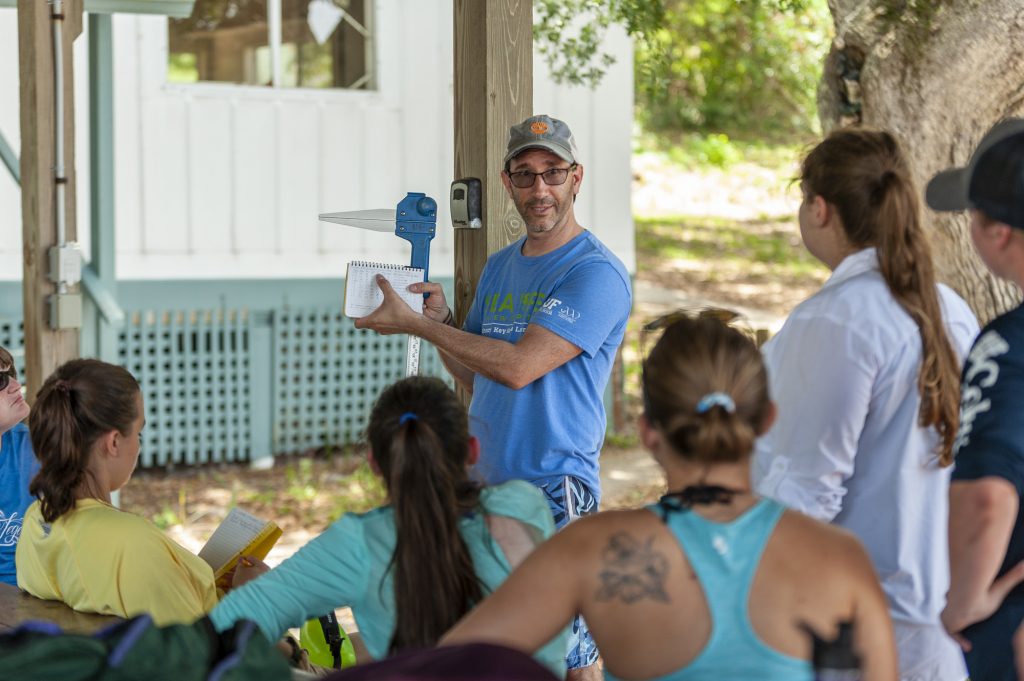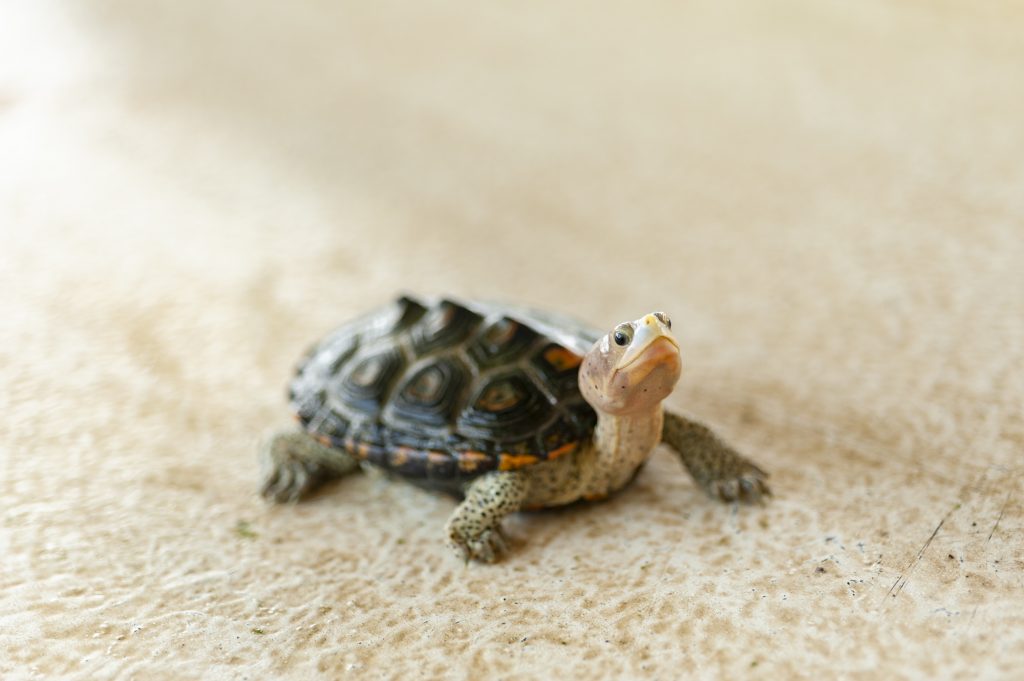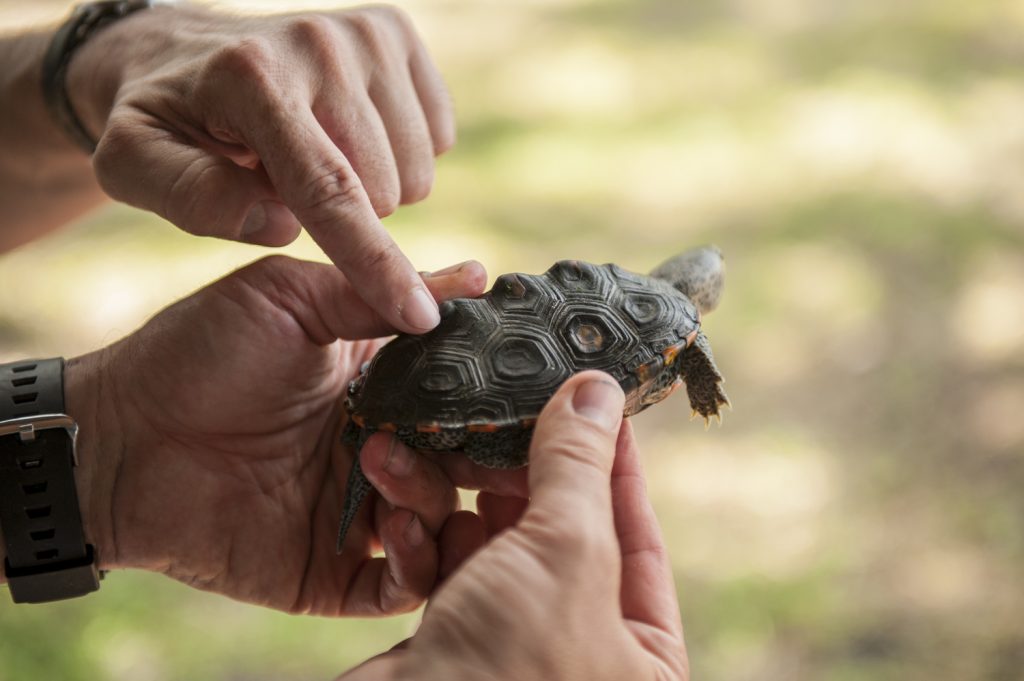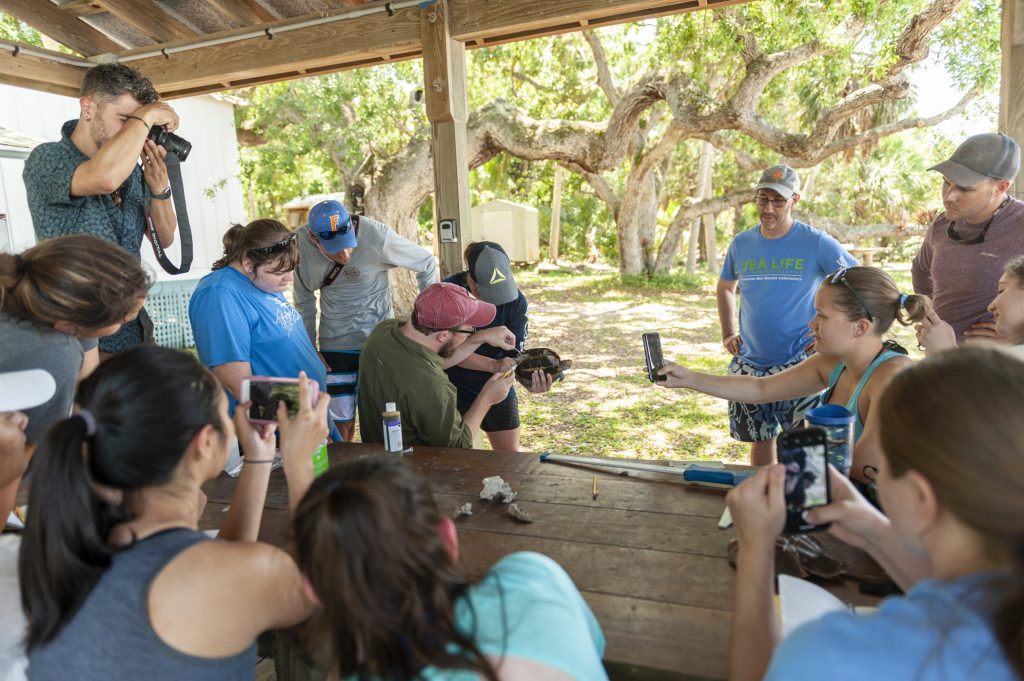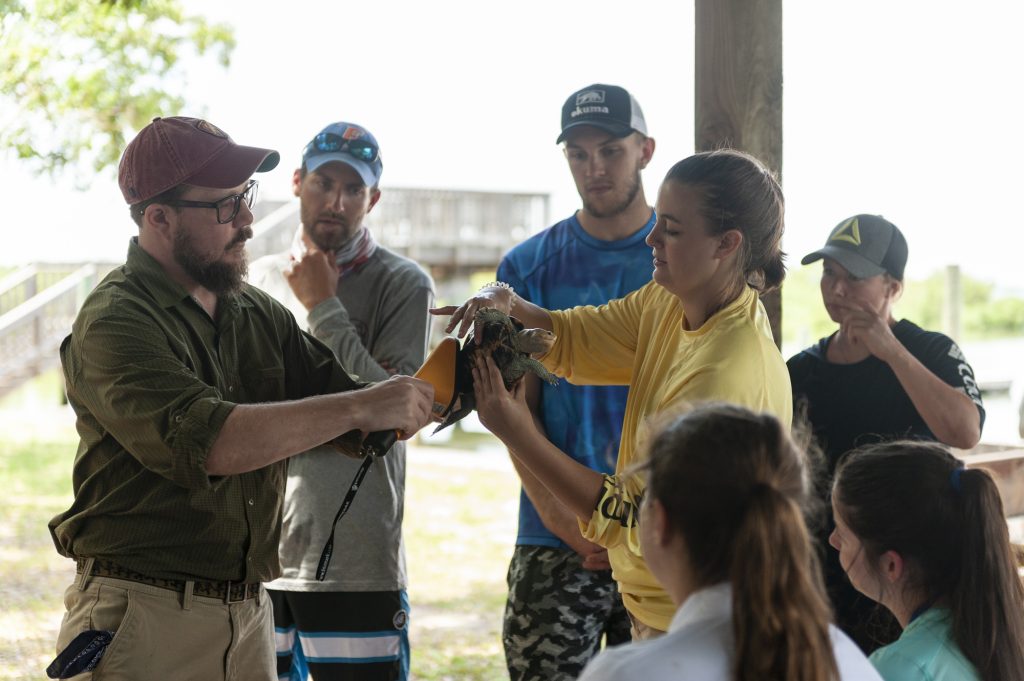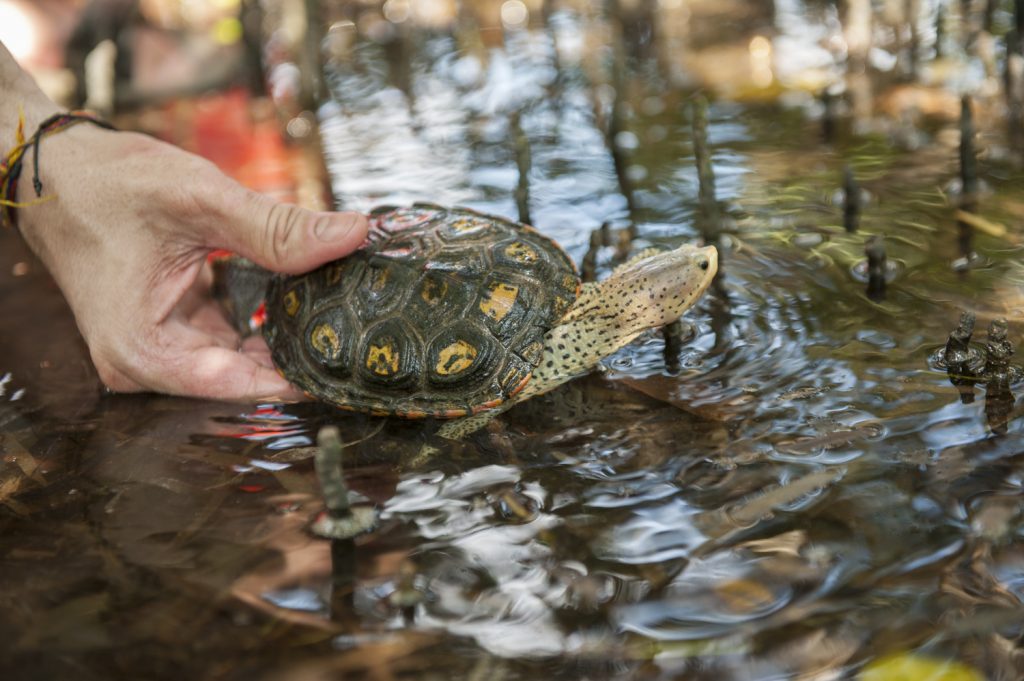Mud in your shoes and a squirming turtle in hand may not sound like a typical college class, but for students taking Island Biology, this was to be expected.
Over the 10-day course, University of Florida and Santa Fe College undergraduates got a taste of both the rigor and thrill of conducting fieldwork, all while bunking in a pre-Civil War era lighthouse on Seahorse Key in the Cedar Keys National Wildlife Refuge.
The course, designed and taught by Coleman Sheehy, herpetology collections manager for the Florida Museum of Natural History, was created with exactly that goal in mind.
“Some students graduate with a degree in biology and no research experience,” he said. “As a result, they often have ideas about research but don’t know what it’s really like. The benefit of taking a class like this early on is that they understand what they’re getting into. It can help carry them through their entire undergrad career.”
As the students come to understand, field research can be tougher than it looks.
Florida Museum photo by Kristen Grace
“It’s hot, you’re sweating, you’re getting bit by mosquitoes, you have to watch out for stingrays and barnacles, you’re lugging buckets around,” Sheehy said. “Fieldwork is definitely not for everyone.”
But there is a payoff.
On the second morning of the course, the students helped Sheehy and his collaborator Ben Atkinson, an assistant professor at Flagler College, find and analyze a local population of diamondback terrapins, a unique species of turtle that needs brackish water to survive. Spotting one of these rare animals hiding in the wrack of a mangrove island can suddenly make scrambling around sharp-edged Spartina grass in the summer heat seem worth it.
Video by Rose Roberts.
Florida is home to five of the seven described diamondback terrapin subspecies. Of these five, three are found only in Florida.
Sheehy and Atkinson are examining the Cedar Key population as part of a larger effort led by the Florida Fish and Wildlife Conservation Commission to determine if this subspecies of diamondback terrapin is threatened and in need of statewide protection.
“They are the only species of turtle, besides sea turtles, that are living out here in this type of environment,” Sheehy said. “Ecologically, this is a unique species.”
As with other turtles, sex in terrapins is determined by temperature. Rising temperatures result in fewer males, which could signal trouble for the future of the species.
Monitoring terrapins gives Sheehy and Atkinson insights into the basic biology and ecology of these understudied animals and is a way to track the health of the local population. And on board a flats boat zipping across the Gulf of Mexico, the Island Biology students readied themselves for their first fieldwork challenge.
Finding the terrapins and learning how to collect key data on their size, sex and general age helped the students begin to formulate research questions of their own. As part of the course, each student must design and complete a small-scale island biology project.
From tracking die-off in red bay trees on Seahorse Key caused by an invasive beetle, analyzing how temperature changes affect the crawling speed of brittle stars or detecting patterns in how sand dollars maintain distance from each other, the students “have to figure out something that interests them and then take ownership of that idea,” Sheehy said.
Fauve Wilson, a marine sciences sophomore at Santa Fe who transferred to UF this fall, said that a course like this is important to becoming a better researcher, even if students are not majoring in marine sciences.
“Whether you’re studying entomology, herpetology, or if you’re just interested in doing research one day, you get a really great diversity,” she said. “Working with wildlife in the field and working in the lab, I think, are both awesome, personally. Getting to wear a bunch of bug spray, throwing on a hat and being able to work with a real living creature rather than, say, sitting at a computer or doing experiments all day does give you that little bit of freedom to get outside and enjoy yourself.”
Florida Museum photo by Kristen Grace
Source: Coleman Sheehy, csheehy@floridamuseum.ufl.edu, 352-273-1945
